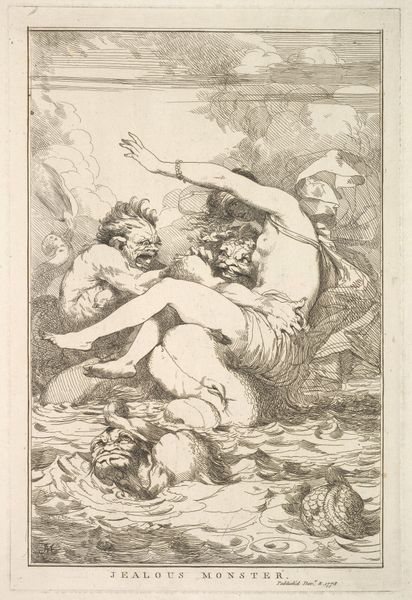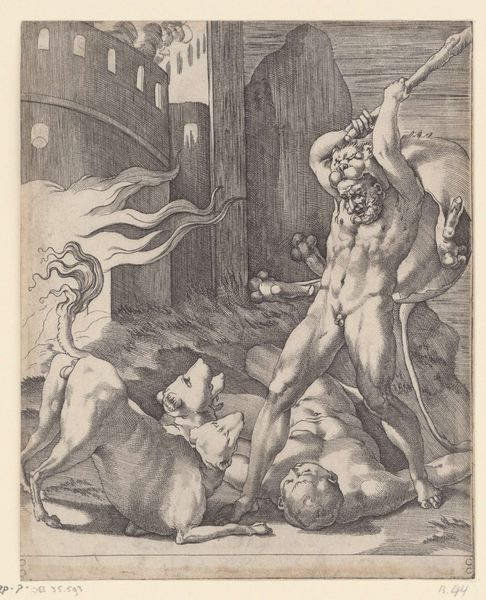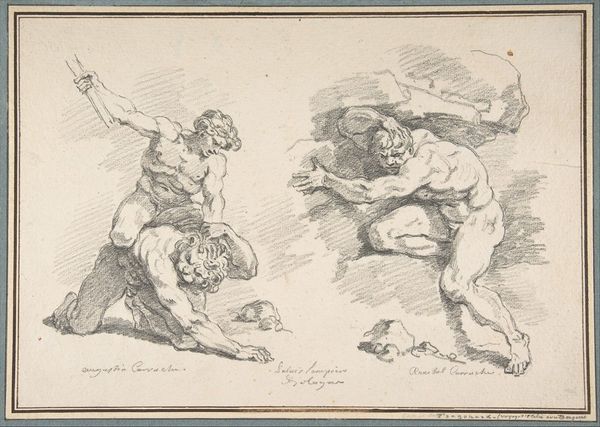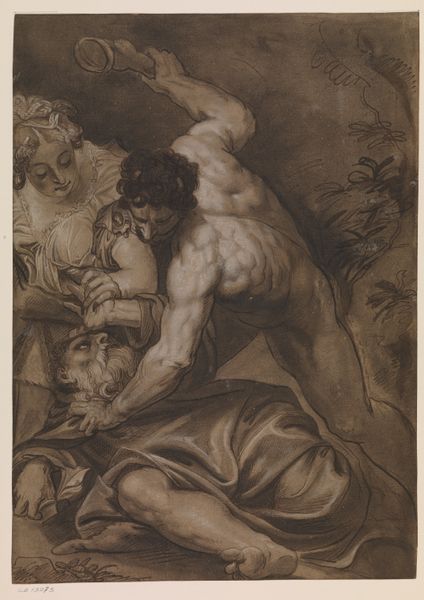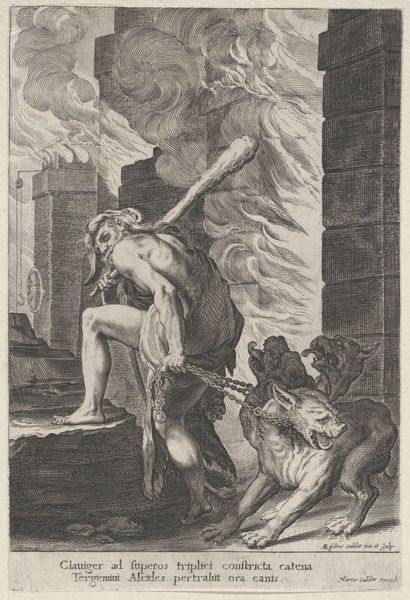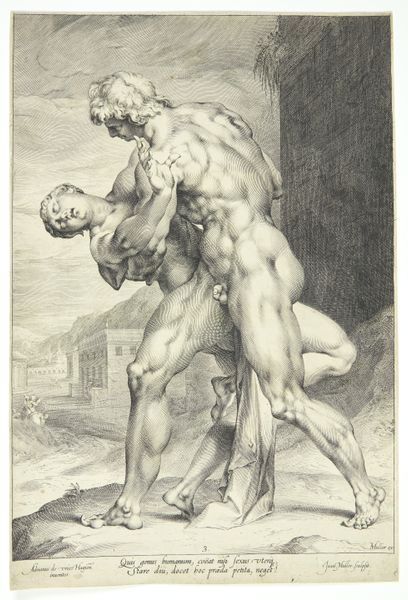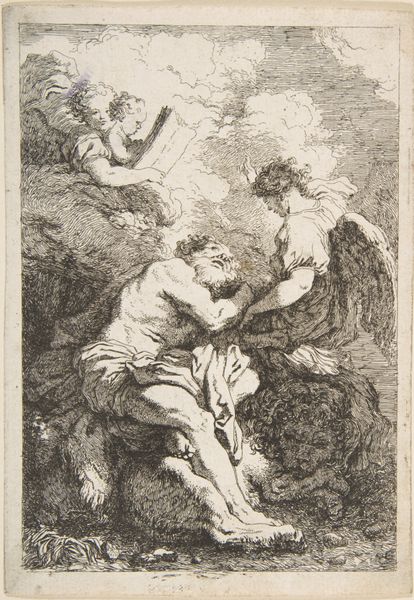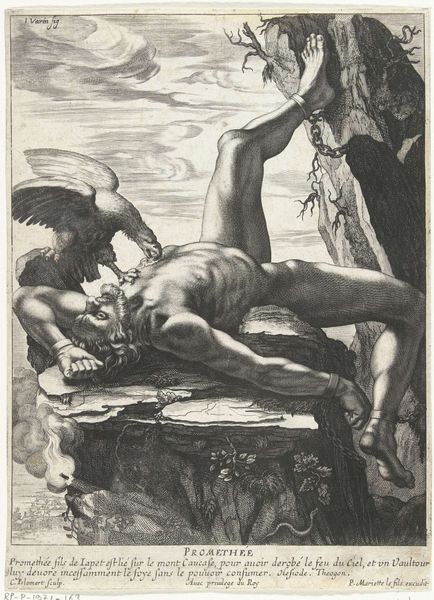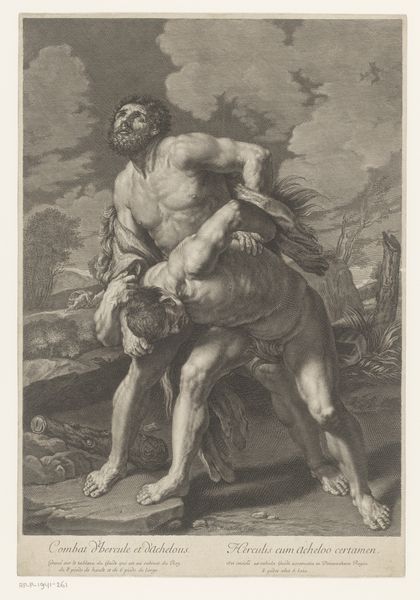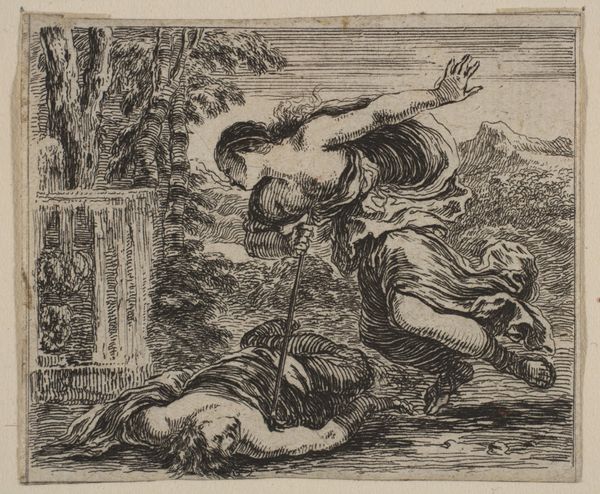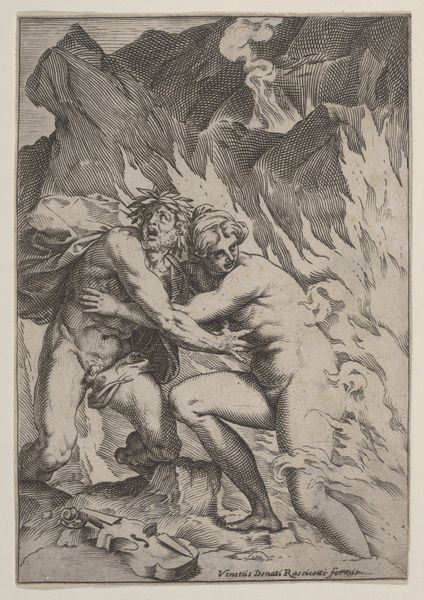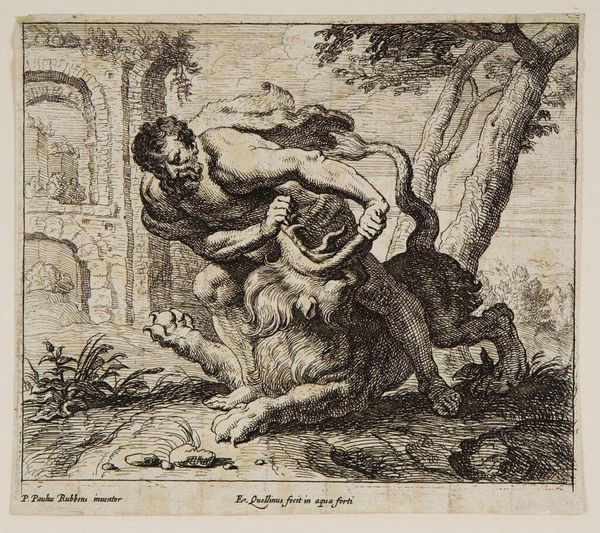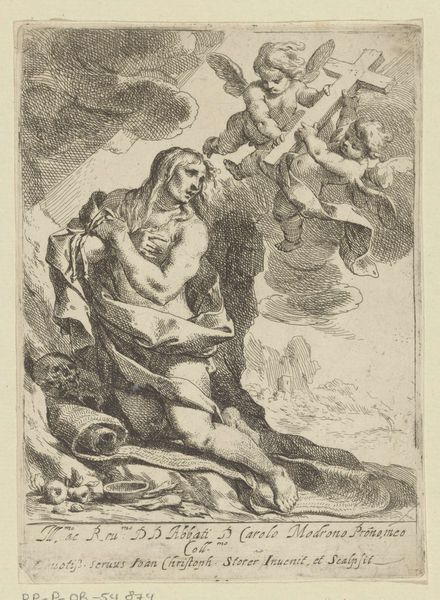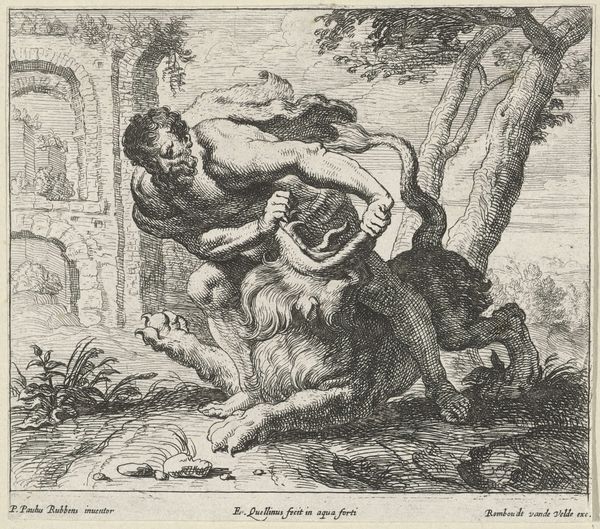
print, engraving
#
baroque
# print
#
figuration
#
history-painting
#
engraving
Dimensions: height 210 mm, width 167 mm
Copyright: Rijks Museum: Open Domain
Curator: I’d like to draw your attention to this dramatic engraving by Willem Pietersz. Buytewech, titled "Kain doodt Abel," or "Cain Killing Abel," dating from 1612 to 1613. Editor: My immediate reaction is one of raw power and violence. The composition, the way the figures are arranged... it's almost overwhelming in its intensity. The stark lines of the engraving accentuate the muscularity and tension. Curator: Absolutely. Buytewech captured a pivotal biblical scene and speaks to its lasting moral and social implications. We see the moment Cain takes his brother's life. The engraving, through its widespread distribution as a print, serves as a cautionary tale against jealousy and fratricide, echoing through artistic and religious spheres. Editor: The artist uses such stark contrasts—the dark shading emphasizes Cain's physicality, while Abel is lighter, more vulnerable. The lines are etched with an energy that seems to almost vibrate with the scene’s terrible action. Notice too, how Cain dominates the pictorial space, looming over Abel. Curator: And consider the function of art during the early 17th century; such visuals played a didactic role, reinforcing religious narratives within the public consciousness. These images reinforced morality during a period defined by religious conflict. Editor: It's interesting how the flames almost mimic Cain's rage, twisting upwards behind him, reflecting the turmoil within. This engraving achieves an impressive use of chiaroscuro, given its limited palette, which greatly enhances the sense of drama. Curator: Indeed, the setting – the sacrificial altar – becomes almost a stage for this primal scene. It connects the story of sacrifice, acceptance, rejection, and murder to a universal human condition explored by writers and artists alike for centuries. Editor: What resonates with me most is its raw immediacy and dynamism despite the relatively static medium. Buytewech’s technique underscores not only the horror of the deed but the inner emotional state of these brothers as they engage in this battle to the death. Curator: It invites reflection on morality, fraternity, and the destructive nature of unchecked envy and anger throughout history. It's a reminder of art's power to explore complex social and spiritual themes, and its vital role in shaping ethical awareness. Editor: A work like this serves as testament to the expressive range achievable through form alone, revealing the potential of engraving to not just depict a narrative, but make viewers viscerally feel the emotions behind it.
Comments
No comments
Be the first to comment and join the conversation on the ultimate creative platform.
